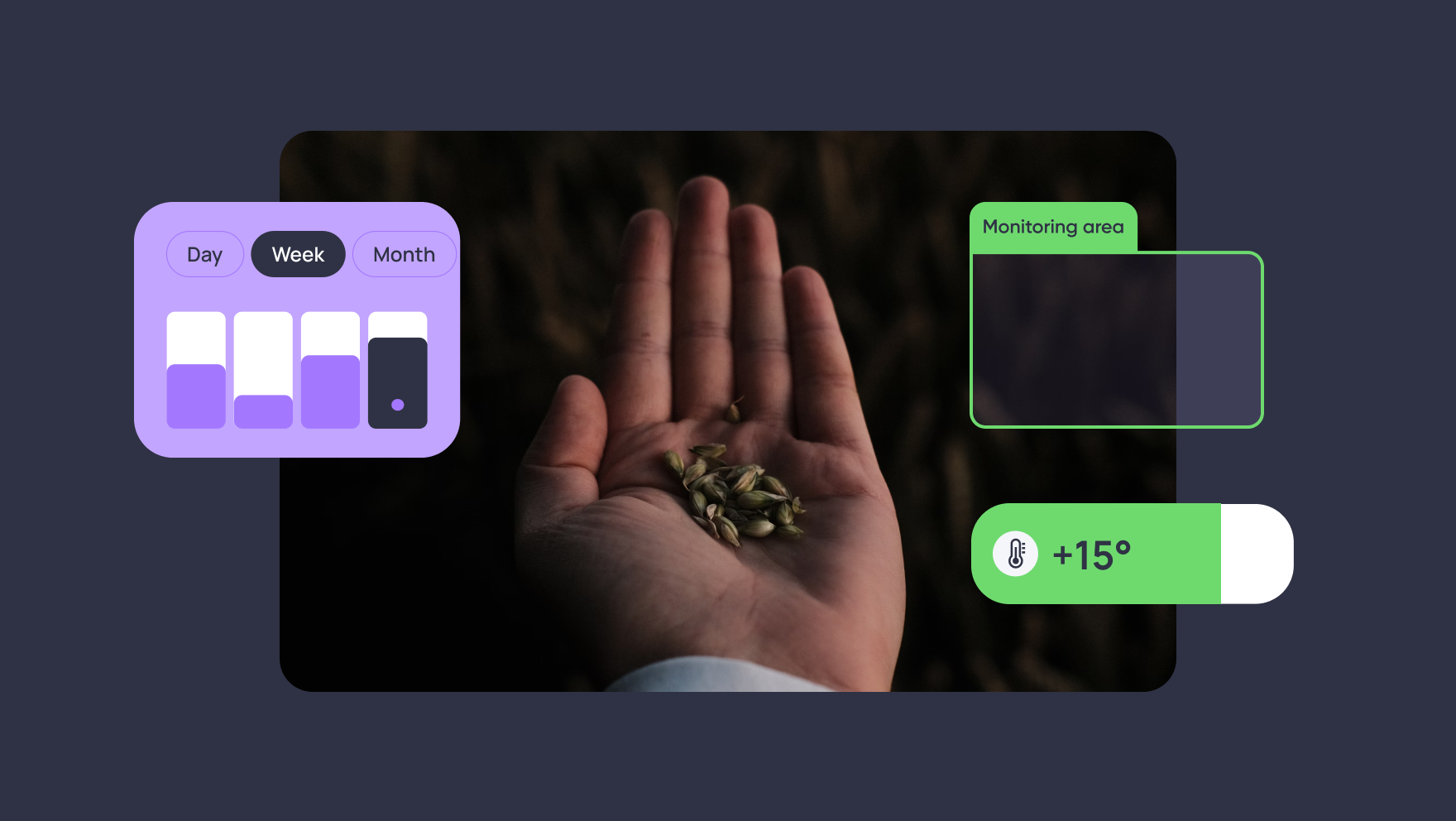Reduce post-harvest losses by up to 20% with IoT monitoring
When people think of AgriTech, they often imagine drones, robotics, or biotech — but another critical frontier is preserving what’s already harvested. Despite digital advances, 10–15% of grain is still lost post-harvest. Using IoT monitoring systems offers a compelling path to reducing these losses — and that’s exactly what CropSave is built to do.

The growing demand for tech in agriculture
Around the world, farmers and agribusinesses are increasingly adopting sensors, cloud analytics, AI-driven decision support systems, and automation. Precision agriculture, data-driven yield optimization, and supply chain digitization are no longer niche innovations — they are becoming essential tools for maintaining competitiveness.
But despite progress upstream — in planting, fertilization, and crop management — significant challenges in handling and storage persist downstream.
Post-harvest loss at a global scale
- According to a Food and Agriculture Organization-based estimate, ~13.8% of food produced (before retail) is lost along the supply chain (i.e. from harvesting through processing).
- For grains in particular, losses tend to range between 5% and 15% globally, with developing regions often seeing even higher rates because of infrastructure or management limitations.
- For fresh produce (fruits, vegetables), losses are often even more severe: some studies report post-harvest loss rates between 28% and 55% globally, depending on region, commodity, and logistics conditions.
These losses are not just inefficiencies — they have real consequences:
- Economic waste for farmers, storage operators, and supply chains
- Increased pressure on food security, especially in regions that are already vulnerable
- Wasted resources (land, water, fertilizer) and higher per-unit emissions
- Incentives for overproduction or wastage further downstream
Thus, tackling post-harvest loss is not a niche problem — it is essential for sustainability, food security, and profitability globally.
Why the harvested сrop still fails, and why that risk persists
Even when crops are successfully harvested, multiple factors conspire to degrade quality or quantity during the storage / transport window. Key risks include:
- Mechanical stress or damage: Grains or produce can get bruised, cracked, or otherwise damaged during handling, loading/unloading, or movement within storage facilities.
- Unfavorable environmental conditions : Temperature fluctuations, high humidity, condensation, or sudden weather extremes can promote mold, fungal growth, or spoilage. Over time, even small microclimates or heat pockets within storages can propagate defects across a bulk.
- Biological threats: Insect infestations, mites, rodents, and microbial pathogens can progressively destroy stored crops if early signs go undetected.
- Human or operational lapses : Insufficient monitoring, delayed reaction to alarms, mismanagement of ventilation or aeration, or neglect in maintenance can exacerbate losses.
The crux is that spoilage often begins in a small local "hot spot" (slightly elevated temperature, begin microbial growth) and then spreads, converting what might have been isolated losses into substantial bulk damage. The difference between detecting that early hotspot and acting timely can mean the difference of a few percent or tens of percent in loss avoidance.
CropSave: How IoT monitoring helps save the harvest
CropSave is a fully integrated IoT system designed for real-time monitoring of stored crops — helping users detect risk early and act before widespread spoilage. In pilot and customer implementations, it has enabled loss reductions of up to 20%, turning potential waste into added value.
Components of the CropSave system
- Thermal probes : Rugged temperature sensors designed to be inserted deep into grain masses, capturing internal temperature profiles.
- Base station: Collects data from sensors and transmits to cloud services, even in locations with weak cellular coverage (using long-range low-power protocols).
- Web application: Provides real-time analytics, alerts, and visualization for operators, agronomists, and supply chain managers.
Operational workflow
- Deployment / placement: Thermal probes are distributed strategically across storage volumes, so that different spatial zones are covered.
- Continuous data collection & contextualization: Temperatures are tracked in near real-time. The system correlates sensor readings with ambient conditions, historical data, and adjacent probe readings to spot anomalies.
- Anomaly detection & alerting : When a localized temperature deviation is detected (suggesting the start of microbial or insect activity), CropSave flags the precise zone or probe location for inspection or intervention.
- Response & mitigation: Operators can isolate the affected region (through aeration, turning, localized cooling, or physical separation) before spoilage spreads.
- Insights & optimization : Over time, CropSave enables identification of consistently problematic storages or fields, guiding upgrades or infrastructure investment.
Key features of CropSave
- Granular analytics. Tracks and trends temperature changes both internally and externally to detect subtle drift patterns.
- Real-time alerts. Push notifications when parameters deviate beyond thresholds, enabling prompt interventions.
- Reliable connectivity. Uses LoRaWAN to transmit data even in remote or connectivity-poor environments.
- Asset tracking & provenance. Each probe is GPS-tagged, enabling mapping of sensor placement and traceability.
- Durability & resilience. Probes are designed to be dustproof, waterproof, shock resistant, and powered by long-life Li-SOCl₂ batteries.
- Customization & interoperability. CropSave supports integration with third-party systems (ERP, warehouse management) and accommodates additional sensors.
Conclusion
The integration of smart automation, AI, IoT, and blockchain technologies in storage systems to enable real-time environmental monitoring, predictive maintenance, and traceability throughout the grain supply chain is the key.















